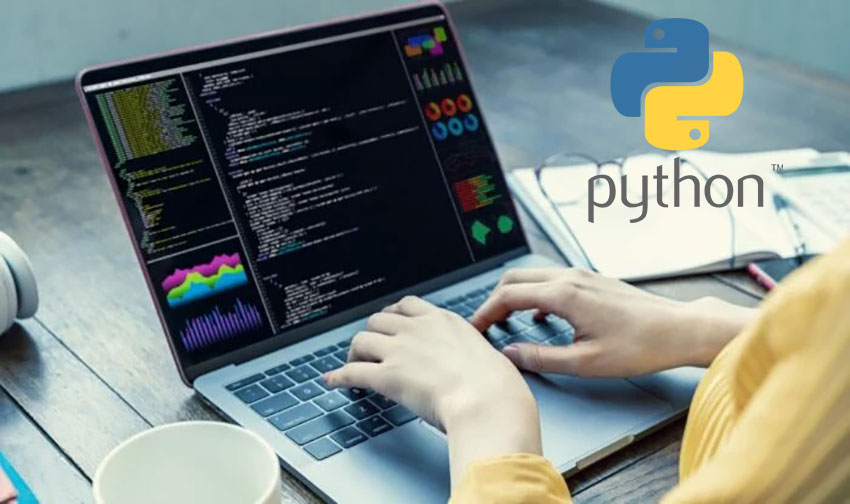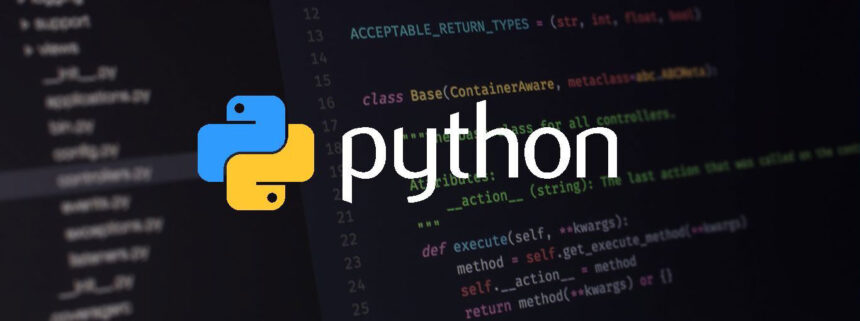Why Python is still the top choice among all programming languages?
Currently, we have an enormous amount of data available to us, which makes the field of data science extremely important. This information was mentioned in a report by Simplilearn.com.

In summary, these points give a glimpse into how Python and JavaScript differ and what they're best suited for, showcasing their strengths and the areas they're commonly used in.
Python: Primarily used for backend development, data science, scientific computing, automation, and scripting.
JavaScript: Mainly used for frontend web development, server-side development (with Node.js), building web applications, and browser automation.
Syntax and Language Constructs:
Python: Known for its clear, readable syntax emphasizing code readability and simplicity. It uses indentation for block delimitation.
JavaScript: Known for its flexibility and dynamic nature. It follows C-like syntax and uses curly braces for block delimitation.
Typing System:
Python: Dynamically typed language, where the type of a variable is inferred at runtime.
JavaScript: Also dynamically typed, but it has some features for type annotations through TypeScript or Flow for static typing.
Concurrency and Asynchronicity:
Python: Traditionally struggled with concurrency due to the Global Interpreter Lock (GIL) in CPython, but libraries like asyncio and concurrent.futures offer asynchronous programming options.
JavaScript: Utilizes an event-driven, non-blocking I/O model which is well-suited for building highly concurrent applications. It uses Promises and async/await syntax for handling asynchronous operations.
Ecosystem and Libraries:
Python: Boasts a rich ecosystem with numerous libraries and frameworks like Django, Flask, NumPy, Pandas, TensorFlow, etc., catering to various domains such as web development, data science, machine learning, and more.
JavaScript: Has a vast ecosystem with libraries and frameworks like React.js, Angular, Vue.js, Express.js, etc., dominating frontend and backend development. Node.js enables server-side development, expanding JavaScript’s versatility.
Execution Environment:
Python: Generally interpreted, though it can be compiled to bytecode (.pyc files) for performance improvements. Python code is executed by the Python interpreter.
JavaScript: Initially designed as a client-side scripting language for web browsers, but with Node.js, it can also be run on servers. JavaScript engines like V8 (used in Node.js) interpret and execute JavaScript code.
Community and Adoption:
Python: Has a strong and diverse community with a focus on readability, accessibility, and inclusivity. Widely adopted in academia, industry, and various domains, contributing to its popularity.
JavaScript: One of the most popular programming languages, owing to its ubiquitous presence in web development. JavaScript has a large, active community constantly innovating and developing new tools, frameworks, and libraries.
Learning Curve and Resources:
Python: Often touted as a beginner-friendly language due to its readability and simplicity. Abundance of learning resources, tutorials, and documentation available.
JavaScript: Widely used in web development, which makes it essential to learn for frontend and full-stack developers. Learning resources are abundant, with various tutorials, online courses, and community forums available.
Use Cases and Domains:
Python: Widely used in scientific computing, data analysis, artificial intelligence, web development, automation, and system administration.
JavaScript: Mainly used for building interactive websites, web applications, server-side applications, mobile app development (with frameworks like React Native), and IoT (Internet of Things) applications.

If you’re thinking about pursuing a career in data science, Python is a programming language worth learning.
Python originated in the 1990s, created by Guido van Rossum, who named it after the popular British comedy series, Monty Python’s Flying Circus. Thanks to its straightforward and clear syntax, Python stands out as an accessible language for beginners to grasp.
Benefits of becoming proficient in Python:
Python is highly flexible and can be used for various purposes.
Python is used in a wide range of fields like mining data, understanding data, creating intelligent systems, teaching machines, making websites, building web tools, controlling embedded devices, designing graphics, developing games, creating networks, making products, quickly building applications, testing software, writing automated scripts, and much more.
Python is becoming increasingly popular as a programming language.
Python is growing quickly because it’s used in many areas, especially in data science, machine learning, and AI.
There is a high demand for Python programmers.
Python is highly sought after in the job market, as indicated by the abundance of job postings on LinkedIn.com, a major platform for job seekers.
Python is easy for beginners to pick up and utilize.
According to a survey conducted by WP Engine, 909 developers in the US were asked which programming language they found easiest to learn. Python ranked second, following HTML.
Python programmers earn high salaries.
In areas like building websites, teaching computers to learn, and analyzing data, Python experts earn some of the highest salaries.
Read more blog articles: MorTimes.com



























